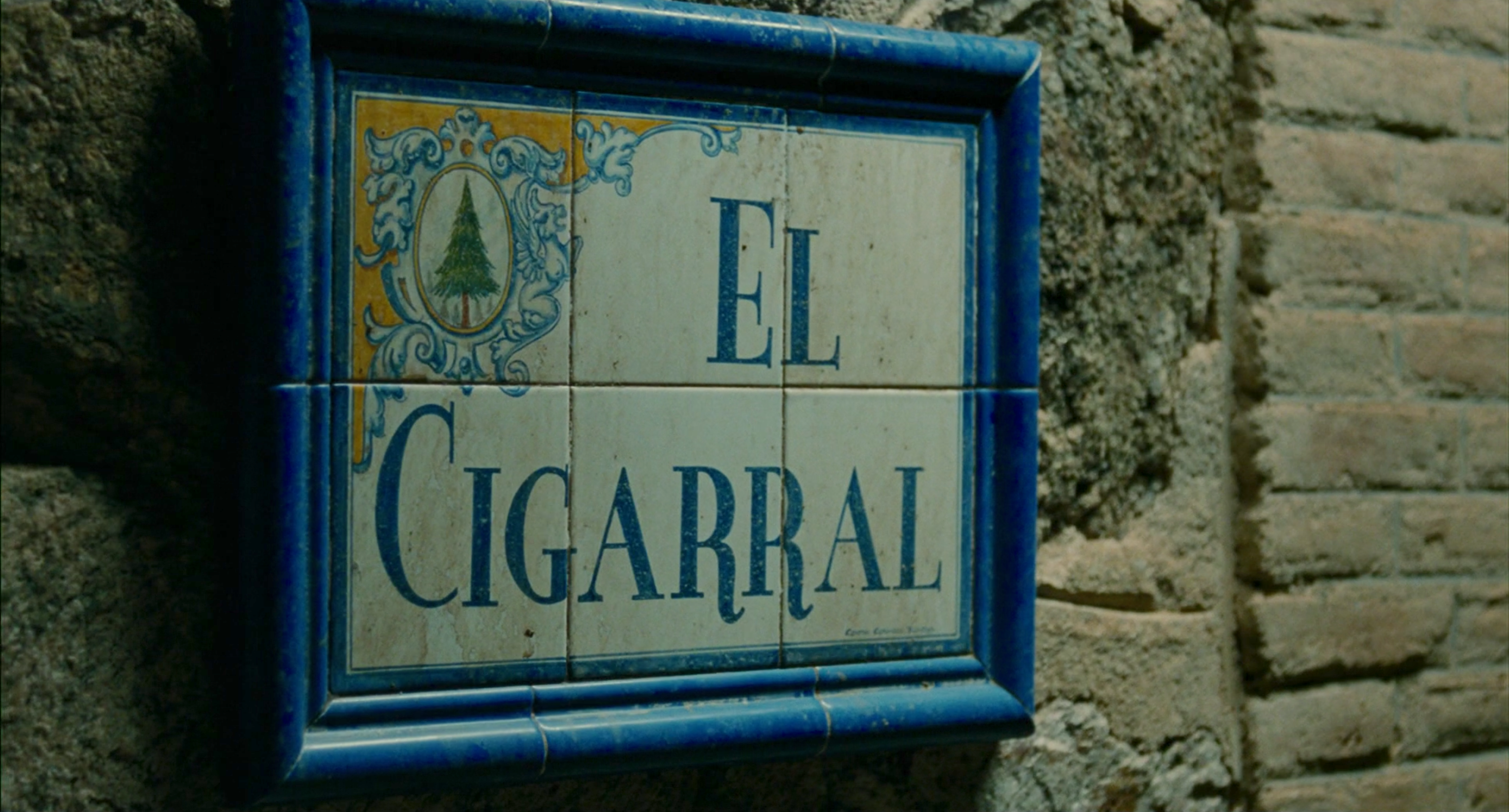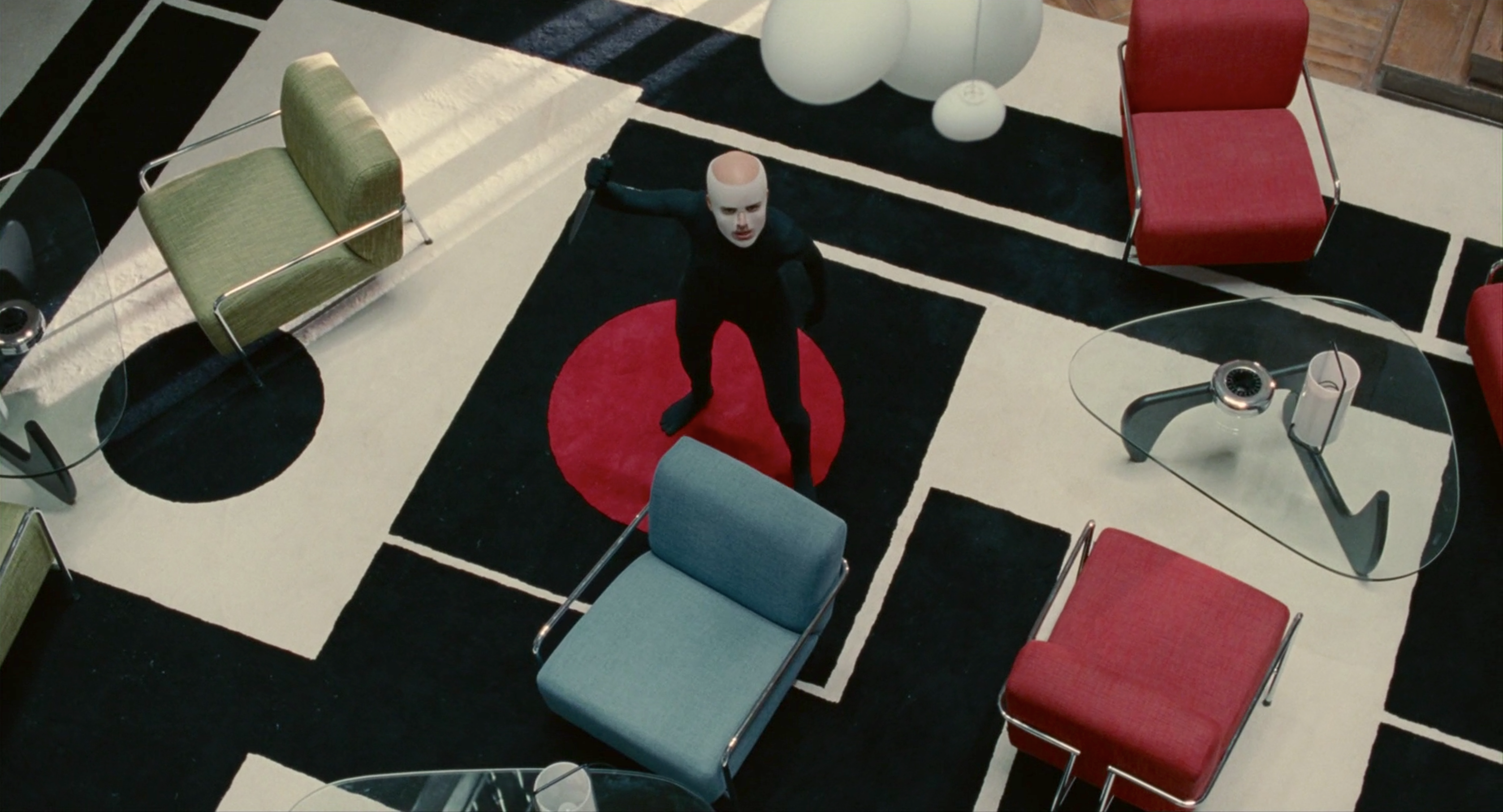The Furniture: Decorating Obsession in "The Skin I Live In"
 Monday, May 15, 2017 at 12:00PM
Monday, May 15, 2017 at 12:00PM
It's a Pedro Party! Our Almodóvar week is extending a couple of days. You can click on the images from this production design feature to see them in magnified detail. Here's Daniel Walber...
El Cigarral is a mysterious, hidden estate that lurks on the outskirts of Toledo, Spain. Its gates are perpetually locked and its secrets are not easily pried loose. Its owner, Robert Ledgard (Antonio Banderas), keeps the outside world at a distance.
That said, more people manage to break in than he might like. It’s inevitable, at least in movies like these. Almodovar’s The Skin I Live In is part of a long tradition that winds its way from The Island of Lost Souls through Eyes Without a Face. And this house, which seems to be accessible only under cover of night or in disguise, is among the most dramatically conceived in the entire genre...
Production designer Antxón Gómez, art director Carlos Bodelón and set decorator Vicent Díaz have built a palace from Ledgard’s single-minded surgical mania. His scientific pursuit of a perfect, invulnerable skin leads to a living room full of smooth, rounded furniture. Everything is geometric and globular, from the pattern on the rug to the baubles hanging from the ceiling.
A surgeon might be expected to prefer sharper furniture. But he keeps his array of scythes below, in the hole where he first keeps Vicente (Jan Cornet). Above ground, in his carefully arranged living room, everything is already perfectly carved.
The decor also presents a clear preoccupation with physical control, beyond the obvious security measures. Ledgard’s clinic is doubly fortified, first by the heavy brick of the estate’s original structures and second by a state of the art glass enclosure.
The enormous television in his bedroom even more clearly foregrounds his authoritarian personality. This is where he watches Vicente, now Vera (Elena Anaya), in high definition.
And there is the unsubtle metaphor of his bonsai trees.
The use of art is even more intriguing than the furniture or the architecture. Ledgard’s taste is transparent, like most of cinema’s mad doctors. He purchases art that reminds him of his own obsessions, then hides it away. The pieces feature the recurring smoothness and malleability, particularly this painting by Guillermo Pérez Villalta.
Two giant depictions of Venus by Titian emphasize an idealized vision of the female form. Almodóvar aligns them quite bluntly with the image of Vera that appears on Ledgard’s TV.
Vera is Ledgard’s Venus, her body his masterpiece. He sees little difference between the two-dimensional woman on his wall, the three-dimensional model on his operating table and the real person locked in a room down the hall.
Vera, however, has a much more complex relationship to art. This manifests in her room, a space accented by exercise balls, sculpture and a makeshift mural.
This is far cry from its initial condition, later revealed in a flashback. Vicente has just been moved to the house, where he will recover from the first surgery. The non-threatening shade of blue overwhelms the room, evoking the antiseptic mood of an expensive hospital.
The journey from one to the other is long. The first major step is the wall, an elaborate mural designed by artists Sandra and Tania Wahlbeck. Though it begins as an archetypal prisoner’s calendar, it quickly becomes an outlet for poetic and artistic experimentation. It is surrealist but intimate, a means of creating a new self. At the very center is an aphorism, “El arte es sintoma de salud.” “Art is a symptom of health.”
Another artistic vocation comes via the television, where Vera only seems able to find a handful of channels. She stumbles across a documentary on Louise Bourgeois and is instantly fascinated.
Inspired by these uncanny, tactile and roughly sewn-together representations of the human form, Vera begins to craft her own sculptures. She works through her own identity by working with her hands.
In a sense, this is precisely what Ledgard wants. By sculpting, Vera comes to accept her new form, a form that he considers his ultimate masterpiece. But that is not quite what happens. Her artistic discovery is broader than that, molding a new sense of self without jettisoning memory. This is why the film ends the way it does, emphasizing both continuity and transition. Vera’s art, unlike her captor’s, will not be hidden away.
Previously on Daniel Walber's "The Furniture"
Previously at our Pedro Party
- Dark Habits - Nathaniel R
- Women on the Verge - Spencer Coile
- All About My Mother - Lynn Lee
- Alberto Iglesias's film scores - Chris Feil


















Reader Comments (7)
The art direction in that film is incredible as it's a reason why Almodovar has to be seen in the big screen.
thevoid99 -- totally agree. I nominated this in the film bitch awards that year.
Daniel -- thanks for all these new wallpapers. elena up against the scribble wall is my new desktop.
Nathaniel - You're welcome! My current desktop is a slideshow of screencaps from all the movies I've written about/considered writing about and it is a great way to live, let me tell you.
A great looking film
Oh, the blindness! The Goya for Production Design went to Blackthorn that year.
Amen, Peggy Sue
I didn't particularly like this film (my own fault: I saw a trailer for a really crappy straight to video film with the same plot entirely revealed in a 1 minute trailer, so there was no surprise when I realized it had some of the same motifs and foreshadowing), but I loved the design. Stunning film to watch because it was so well designed and shot.